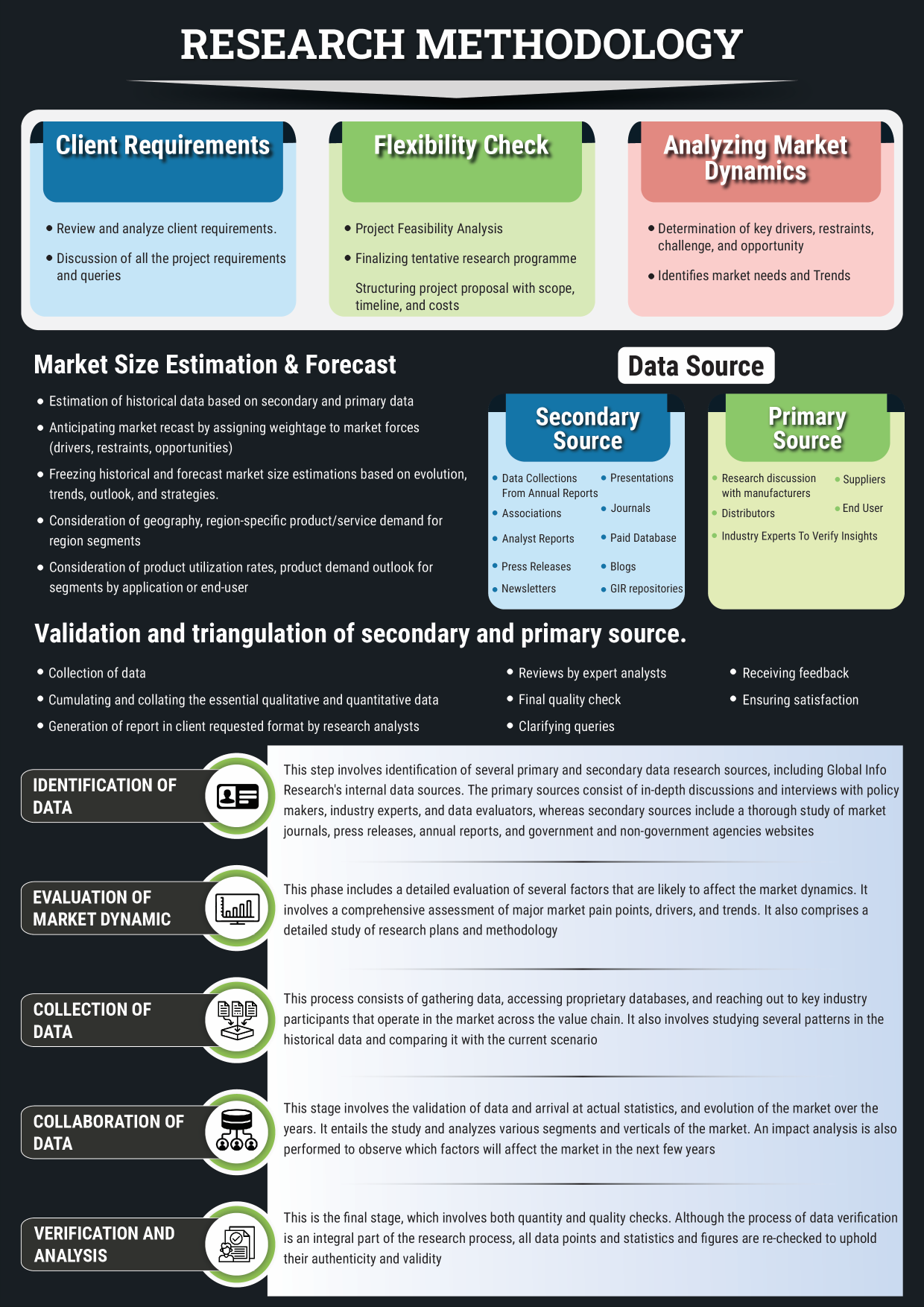Large Volume Wearable Injectors Market 2025: Transforming Drug Delivery & Patient Empowerment
The landscape of healthcare delivery is undergoing a profound transformation driven by a move toward decentralization and patient-centric solutions. At the center of this evolution lies the Large Volume Wearable Injectors (LVWI) market—a category of advanced devices designed to administer large doses of biologics and high-viscosity medications comfortably and safely in non-clinical settings. As chronic diseases like autoimmune conditions, cancer, and rare disorders proliferate, LVWIs present a practical alternative to traditional in-hospital infusions. With strong demand for self-administration, improved adherence, and reduced healthcare costs, the Large Volume Wearable Injectors Market is set to surge through 2025, paving the way for a new era in therapy delivery.
Market Drivers Fueling Expansion
Growth in the LVWI space is sustained by multiple interlinked factors:
- Increased Prevalence of Chronic Conditions
Conditions requiring frequent or prolonged medication—such as oncology, multiple sclerosis, and rheumatoid arthritis—drive the need for at-home drug delivery systems. LVWIs enable patients to self-administer high-volume doses without hospital visits. - Rapid Adoption of Biologics and Biosimilars
Large-molecule drugs, which are more effective for a wider range of conditions, often require precise, controlled, and sustained subcutaneous infusion—capabilities that LVWIs are uniquely positioned to deliver. - Shift to Value-Based Healthcare
Healthcare systems globally focus on outcomes and cost efficiency. LVWIs support these goals by reducing hospital visits, minimizing catheter-related complications, and boosting patient adherence. - Patient-Centered Care and Education
As patients gain access to better health data and treatment options, they seek greater autonomy. LVWIs align with this shift, by enabling more flexible, comfortable, and private administration of medication.
Innovation: The Technology Behind LVWIs
Innovation drives both the functionality and adoption of LVWIs:
- Smart Device Integration
Modern LVWIs incorporate sensors, Bluetooth connectivity, and mobile apps to monitor infusion rates, temperature, and intrusion events. Real-time alerts and dashboards allow clinicians to track adherence and biosensor data remotely. - Intelligent Infusion Management
Adaptive flow control systems now regulate infusion speed based on drug viscosity and patient physiology, enhancing comfort and efficacy. - User-Centric Ergonomics
Lightweight, low-profile devices with soft adhesives and rounded edges ensure patients can wear injectors comfortably for extended periods. - Single-Use and Cartridge-Based Designs
Modular formats simplify drug loading and disposal. With pre-filled cartridges, patients can manage dosing without handling medication, reducing error risk. - Sustainable Materials
Environmental considerations are increasingly important. LVWIs now use recyclable plastics and energy-efficient batteries to support green healthcare initiatives.
Regional Market Dynamics
LVWI adoption varies globally, shaped by healthcare infrastructure, regulation, and payer frameworks:
- North America
Dominant in innovation and early adoption, driven by a strong venture ecosystem, fast regulatory approvals (FDA), and a favorable reimbursement framework. The presence of leading med-tech and pharmaceutical companies fosters co-development opportunities. - Europe
Countries like Germany, the UK, and Scandinavia are accelerating LVWI use through telehealth initiatives and hospital-at-home programs. EU-level regulations and public health policies support remote care models, driving adoption. - Asia-Pacific
A high-growth region, with Japan leading in aging population therapies and chronic disease management. Rising healthcare investment in China and India is creating demand for at-home infusion solutions and digital health platforms. - Latin America, Middle East & Africa
Adoption remains nascent but is burgeoning through private healthcare initiatives, medical tourism, and NGO efforts. Governments in these regions seek scalable and cost-effective healthcare innovations—LVWIs align well with these priorities.
Strategic Considerations for Stakeholders
Successful participation in the LVWI market requires a multi-faceted strategy:
- Robust Clinical Validation
Demonstrating benefits—like reduced infection rates, higher adherence, and cost savings—is critical. Peer-reviewed studies and real-world evidence will facilitate physician acceptance and payer reimbursement. - Partnerships & Co-Development
Collaborations with pharmaceutical firms are essential to co-design injectable formulations. They also streamline regulatory approval by aligning device and drug evaluation processes. - Patient-Centric Experience
The ideal LVWI must be intuitive, minimally disruptive to daily life, and supported by educational resources (videos, guides, telehealth coaches) that simplify onboarding and reduce user anxiety. - Regulatory Readiness
Navigating FDA, EMA, and other country-specific approvals—especially for connected-device medical systems—requires robust compliance capabilities. Early safety testing and digital health standards are essential. - Scalable Manufacturing & Distribution
Device developers must ensure supply chain reliability and cost-effective production. Flexible business models—like rental, subscription-based usage, or bundled therapy kits—will support broad market access. - Focus on Sustainability
Renewable materials, end-of-life recycling, and energy-efficient components can differentiate products and align with global sustainability goals.
Conclusion: A Future-Ready Market
By 2025, the Large Volume Wearable Injectors Market will emerge as a foundational component of modern healthcare delivery. These devices are redefining therapy administration by shifting high-volume drug management from hospitals to homes. The benefits are clear: improved patient quality of life, better adherence, and a leaner healthcare system.
To lead in this evolving category, companies must excel in innovation, collaboration, regulatory strategy, and patient experience design. The intersection of biologics, digital health, and home care offers immense opportunity. LVWIs are not just a trend—they are paving a permanent path toward a future of decentralized, empowered, and personalized medicine.
NOTE:
Quants and Trends is proud to offer an extensive portfolio of meticulously researched healthcare market reports, numbering in the thousands. We also provide tailored customization services to ensure our insights align precisely with your strategic objectives and informational needs. For personalized assistance or to discuss your specific requirements, we invite you to get in touch with our team. We also encourage you to request a complimentary sample PDF report. Please visit our Sample Request Page to receive yours today.
Key Market Players
West Pharmaceuticals
Unilife Corporation
CeQur
Sensile Medical AG
BD Medical
Enable Injections
Roche Laboratories
scPharmaceuticals
SteadyMed Therapeutics
Johnson & Johnson
Segmentation By Type
Electronical Injectors
Mechanical Injectors
Others
Segmentation By Application
Cancer Treatment
Auto-immune Treatment
Blood Disorders Treatment
Others
Segmentation By Region
North America (United States, Canada and Mexico)
Europe (Germany, France, United Kingdom, Russia, Italy, and Rest of Europe)
Asia-Pacific (China, Japan, Korea, India, Southeast Asia, and Australia)
South America (Brazil, Argentina, Colombia, and Rest of South America)
Middle East & Africa (Saudi Arabia, UAE, Egypt, South Africa, and Rest of Middle East & Africa)
Market SWOT Analysis
What are the strengths of the large volume wearable injectors market in 2025?
The large volume wearable injectors market benefits from increased patient compliance and convenience, as these devices allow for self-administration of medication. Technological advancements in design and functionality enhance usability and user experience. Furthermore, the growing prevalence of chronic diseases necessitates more efficient drug delivery solutions.
What are the weaknesses of the large volume wearable injectors market in 2025?
One of the primary weaknesses is the high cost of development and production, which can limit accessibility for some patients. Additionally, regulatory challenges and the need for extensive clinical testing can delay market entry for new products. There may also be concerns regarding the reliability and accuracy of these devices in delivering medication.
What opportunities exist in the large volume wearable injectors market in 2025?
Opportunities include expanding the market into emerging economies where the demand for advanced healthcare solutions is increasing. There is also potential for partnerships with pharmaceutical companies to develop combination therapies that utilize wearable injectors. The rise of telehealth and remote monitoring provides a platform for integrating these devices into broader healthcare systems.
What threats does the large volume wearable injectors market face in 2025?
Threats include intense competition from other drug delivery systems and technologies, which may hinder market growth. Additionally, the rapid pace of technological change means that companies must continuously innovate to stay relevant. Potential cybersecurity risks associated with connected devices also pose a significant challenge, as data breaches can undermine user trust and regulatory compliance.
Market PESTEL Analysis
What political factors influence the large volume wearable injectors market in 2025?
Government regulations on medical devices and drug delivery systems play a crucial role in market growth. Policies related to reimbursement, pricing controls, and approval processes impact the adoption rate of these devices. Additionally, trade policies and geopolitical tensions can affect supply chains and raw material availability.
What economic factors affect the large volume wearable injectors market in 2025?
The overall economic climate influences healthcare spending and investment in advanced medical technologies. The affordability of these devices remains a concern, especially in low- and middle-income countries. Fluctuations in currency exchange rates and inflation can also impact production costs and pricing strategies.
What social factors shape the large volume wearable injectors market in 2025?
An aging population and the rising prevalence of chronic diseases drive demand for convenient drug delivery solutions. Patient preference for at-home treatment and self-administration continues to grow. However, concerns about device usability, training, and adherence may affect market penetration.
What technological factors impact the large volume wearable injectors market in 2025?
Advancements in materials, connectivity, and miniaturization improve the performance and acceptance of wearable injectors. Integration with digital health platforms and remote monitoring enhances patient outcomes. However, the need for continuous innovation and cybersecurity concerns related to connected devices remain key challenges.
What environmental factors influence the large volume wearable injectors market in 2025?
Sustainability concerns drive efforts to develop eco-friendly, biodegradable, or reusable injector components. Regulatory pressures to reduce medical waste are increasing. Additionally, disruptions in global supply chains due to climate change or natural disasters could impact raw material availability.
What legal factors affect the large volume wearable injectors market in 2025?
Stringent regulatory requirements for safety, efficacy, and compliance affect product development and commercialization timelines. Intellectual property rights and patent laws influence competition and innovation. Legal challenges related to device malfunctions, data privacy, and liability concerns can also pose risks to manufacturers.
Market SIPOC Analysis
Who are the suppliers in the large volume wearable injectors market in 2025?
Suppliers include raw material providers for biocompatible plastics, adhesives, and electronic components. Pharmaceutical companies supplying drug formulations for integration with these injectors also play a key role. Additionally, contract manufacturers and technology providers contribute to device development and production.
What are the key inputs in the large volume wearable injectors market in 2025?
Inputs include advanced materials for device manufacturing, cutting-edge microfluidic and electronic components, and prefilled drug formulations. Regulatory approvals, clinical trial data, and investments in R&D are also critical inputs for market growth.
What are the main processes involved in the large volume wearable injectors market in 2025?
The process starts with research, design, and prototyping, followed by rigorous clinical testing and regulatory approvals. Manufacturing involves precision engineering and quality control to ensure device safety and efficacy. Post-market activities include distribution, training for healthcare providers and patients, and ongoing monitoring for performance and safety.
What are the key outputs of the large volume wearable injectors market in 2025?
The primary outputs are FDA-approved and CE-marked wearable injector devices designed for self-administration of high-volume biologics. Other outputs include improved patient adherence, reduced hospital visits, and enhanced drug delivery efficiency. Additionally, real-world data insights from connected devices contribute to personalized treatment strategies.
Who are the customers in the large volume wearable injectors market in 2025?
Customers include hospitals, specialty clinics, and home healthcare providers looking for efficient drug delivery solutions. Pharmaceutical companies partner with device manufacturers to enhance biologic drug administration. End users also include patients managing chronic diseases who seek convenient and less invasive treatment options.
Market Porter's Five Forces
How intense is the competitive rivalry in the large volume wearable injectors market in 2025?
The market is highly competitive, with established medical device companies and new entrants continuously innovating. Differentiation is driven by technology, ease of use, and integration with digital health platforms. Price competition is moderate due to the specialized nature of these devices and regulatory barriers.
What is the threat of new entrants in the large volume wearable injectors market in 2025?
The threat of new entrants is moderate to low due to high R&D costs, stringent regulatory requirements, and the need for strong distribution networks. However, startups with innovative solutions and partnerships with pharmaceutical firms may disrupt the market.
How strong is the bargaining power of suppliers in the large volume wearable injectors market in 2025?
Suppliers of advanced materials and electronic components hold moderate bargaining power, especially for specialized biocompatible materials and microfluidic technology. Dependence on a limited number of high-quality suppliers can create supply chain vulnerabilities.
What is the bargaining power of buyers in the large volume wearable injectors market in 2025?
Buyers, including hospitals, pharmaceutical companies, and patients, have moderate bargaining power. Healthcare providers and insurers influence pricing and adoption, while patients seek affordability and ease of use. Bulk purchasing by large healthcare systems can pressure manufacturers for better pricing.
How significant is the threat of substitutes in the large volume wearable injectors market in 2025?
The threat of substitutes is moderate, with alternatives like autoinjectors, infusion pumps, and prefilled syringes available. However, these options may not match the convenience and efficiency of wearable injectors for high-volume drug delivery, giving the market a competitive edge.
Market Upstream Analysis
What are the key raw materials used in the large volume wearable injectors market in 2025?
Key raw materials include biocompatible plastics, medical-grade adhesives, and silicone for skin-friendly applications. Advanced microfluidic components, electronic sensors, and battery systems are also essential for device functionality and connectivity.
Who are the main suppliers in the upstream supply chain of large volume wearable injectors in 2025?
Suppliers include manufacturers of specialty polymers, medical-grade electronics, and drug formulation components. Companies specializing in precision engineering and microfabrication play a crucial role in ensuring high-quality device production.
What are the major challenges in the upstream supply chain of large volume wearable injectors in 2025?
Challenges include fluctuations in raw material costs, regulatory compliance for biocompatibility, and supply chain disruptions due to geopolitical factors. Dependence on specialized suppliers for critical components can also create bottlenecks.
How do technological advancements impact the upstream supply chain in 2025?
Advancements in material science, miniaturization, and smart sensor technology enhance device efficiency and manufacturing scalability. Automation in production processes improves consistency and reduces costs, while innovations in sustainable materials support environmental compliance.
How do regulatory requirements affect upstream suppliers in 2025?
Strict regulatory standards for medical devices and drug delivery systems require suppliers to meet rigorous quality and safety benchmarks. Compliance with FDA, EMA, and ISO certifications is mandatory, increasing the need for continuous monitoring and validation of raw materials and components.
Market Midstream Analysis
Who are the key players in the midstream segment of the large volume wearable injectors market in 2025?
The midstream segment includes medical device manufacturers, contract manufacturing organizations (CMOs), and pharmaceutical companies integrating drug formulations with wearable injectors. Technology firms specializing in connectivity and automation also play a crucial role.
What are the main processes involved in the midstream stage of large volume wearable injectors in 2025?
Key processes include product design, precision engineering, and large-scale manufacturing. Rigorous quality control, clinical testing, and regulatory approvals ensure compliance with safety standards before distribution. Integration with digital health platforms is also a growing trend.
What challenges impact the midstream segment of the large volume wearable injectors market in 2025?
Challenges include high production costs, complex regulatory approvals, and ensuring device reliability. Managing supply chain dependencies and scaling production while maintaining quality and affordability are also critical concerns.
How does innovation influence the midstream stage of the market in 2025?
Advancements in microfluidics, biocompatible materials, and smart sensor technology enhance device efficiency and user experience. AI-driven quality control and automated manufacturing streamline production, reducing costs and improving scalability.
How does regulatory compliance affect midstream operations in 2025?
Manufacturers must adhere to strict FDA, EMA, and ISO regulations to ensure safety and efficacy. Compliance with Good Manufacturing Practices (GMP) is essential, and continuous monitoring is required to meet evolving healthcare standards and cybersecurity guidelines for connected devices.
Market Downstream Analysis
Who are the key players in the downstream segment of the large volume wearable injectors market in 2025?
The downstream segment includes healthcare providers, hospitals, specialty clinics, and home care services that administer or prescribe these devices. Pharmaceutical companies and distributors ensure product availability, while patients are the ultimate end users.
How are large volume wearable injectors distributed in 2025?
Distribution occurs through direct sales to healthcare institutions, partnerships with pharmaceutical firms, and online medical supply channels. Specialty pharmacies and third-party logistics providers also play a role in ensuring timely and safe delivery to patients.
What challenges affect the downstream segment of the large volume wearable injectors market in 2025?
Challenges include pricing pressures, reimbursement complexities, and patient education on proper device usage. Healthcare providers may require additional training, and regulatory variations across regions can impact market penetration.
How does patient adoption influence the downstream market in 2025?
Patient adoption depends on ease of use, affordability, and physician recommendations. The shift toward self-administration and home-based treatment increases demand but concerns about reliability and insurance coverage may affect uptake.
What role does digital health integration play in the downstream market in 2025?
Connected devices enable remote monitoring, real-time adherence tracking, and data sharing with healthcare providers. Digital integration improves patient outcomes and streamlines chronic disease management, making wearable injectors a more attractive option in value-based healthcare systems.
Chapter 1, to describe Large Volume Wearable Injectors product scope, market overview, market estimation caveats and base year.
Chapter 2, to profile the top manufacturers of Large Volume Wearable Injectors, with price, sales, revenue and global market share of Large Volume Wearable Injectors from 2018 to 2023.
Chapter 3, the Large Volume Wearable Injectors competitive situation, sales quantity, revenue and global market share of top manufacturers are analyzed emphatically by landscape contrast.
Chapter 4, the Large Volume Wearable Injectors breakdown data are shown at the regional level, to show the sales quantity, consumption value and growth by regions, from 2018 to 2029.
Chapter 5 and 6, to segment the sales by Type and application, with sales market share and growth rate by type, application, from 2018 to 2029.
Chapter 7, 8, 9, 10 and 11, to break the sales data at the country level, with sales quantity, consumption value and market share for key countries in the world, from 2017 to 2022.and Large Volume Wearable Injectors market forecast, by regions, type and application, with sales and revenue, from 2024 to 2029.
Chapter 12, market dynamics, drivers, restraints, trends, Porters Five Forces analysis, and Influence of COVID-19 and Russia-Ukraine War.
Chapter 13, the key raw materials and key suppliers, and industry chain of Large Volume Wearable Injectors.
Chapter 14 and 15, to describe Large Volume Wearable Injectors sales channel, distributors, customers, research findings and conclusion.
1 Market Overview
1.1 Product Overview and Scope of Large Volume Wearable Injectors
1.2 Market Estimation Caveats and Base Year
1.3 Market Analysis by Type
1.3.1 Overview: Global Large Volume Wearable Injectors Consumption Value by Type: 2018 Versus 2022 Versus 2029
1.3.2 Electronical Injectors
1.3.3 Mechanical Injectors
1.3.4 Others
1.4 Market Analysis by Application
1.4.1 Overview: Global Large Volume Wearable Injectors Consumption Value by Application: 2018 Versus 2022 Versus 2029
1.4.2 Cancer Treatment
1.4.3 Auto-immune Treatment
1.4.4 Blood Disorders Treatment
1.4.5 Others
1.5 Global Large Volume Wearable Injectors Market Size & Forecast
1.5.1 Global Large Volume Wearable Injectors Consumption Value (2018 & 2022 & 2029)
1.5.2 Global Large Volume Wearable Injectors Sales Quantity (2018-2029)
1.5.3 Global Large Volume Wearable Injectors Average Price (2018-2029)
2 Manufacturers Profiles
2.1 West Pharmaceuticals
2.1.1 West Pharmaceuticals Details
2.1.2 West Pharmaceuticals Major Business
2.1.3 West Pharmaceuticals Large Volume Wearable Injectors Product and Services
2.1.4 West Pharmaceuticals Large Volume Wearable Injectors Sales Quantity, Average Price, Revenue, Gross Margin and Market Share (2018-2023)
2.1.5 West Pharmaceuticals Recent Developments/Updates
2.2 Unilife Corporation
2.2.1 Unilife Corporation Details
2.2.2 Unilife Corporation Major Business
2.2.3 Unilife Corporation Large Volume Wearable Injectors Product and Services
2.2.4 Unilife Corporation Large Volume Wearable Injectors Sales Quantity, Average Price, Revenue, Gross Margin and Market Share (2018-2023)
2.2.5 Unilife Corporation Recent Developments/Updates
2.3 CeQur
2.3.1 CeQur Details
2.3.2 CeQur Major Business
2.3.3 CeQur Large Volume Wearable Injectors Product and Services
2.3.4 CeQur Large Volume Wearable Injectors Sales Quantity, Average Price, Revenue, Gross Margin and Market Share (2018-2023)
2.3.5 CeQur Recent Developments/Updates
2.4 Sensile Medical AG
2.4.1 Sensile Medical AG Details
2.4.2 Sensile Medical AG Major Business
2.4.3 Sensile Medical AG Large Volume Wearable Injectors Product and Services
2.4.4 Sensile Medical AG Large Volume Wearable Injectors Sales Quantity, Average Price, Revenue, Gross Margin and Market Share (2018-2023)
2.4.5 Sensile Medical AG Recent Developments/Updates
2.5 BD Medical
2.5.1 BD Medical Details
2.5.2 BD Medical Major Business
2.5.3 BD Medical Large Volume Wearable Injectors Product and Services
2.5.4 BD Medical Large Volume Wearable Injectors Sales Quantity, Average Price, Revenue, Gross Margin and Market Share (2018-2023)
2.5.5 BD Medical Recent Developments/Updates
2.6 Enable Injections
2.6.1 Enable Injections Details
2.6.2 Enable Injections Major Business
2.6.3 Enable Injections Large Volume Wearable Injectors Product and Services
2.6.4 Enable Injections Large Volume Wearable Injectors Sales Quantity, Average Price, Revenue, Gross Margin and Market Share (2018-2023)
2.6.5 Enable Injections Recent Developments/Updates
2.7 Roche Laboratories
2.7.1 Roche Laboratories Details
2.7.2 Roche Laboratories Major Business
2.7.3 Roche Laboratories Large Volume Wearable Injectors Product and Services
2.7.4 Roche Laboratories Large Volume Wearable Injectors Sales Quantity, Average Price, Revenue, Gross Margin and Market Share (2018-2023)
2.7.5 Roche Laboratories Recent Developments/Updates
2.8 scPharmaceuticals
2.8.1 scPharmaceuticals Details
2.8.2 scPharmaceuticals Major Business
2.8.3 scPharmaceuticals Large Volume Wearable Injectors Product and Services
2.8.4 scPharmaceuticals Large Volume Wearable Injectors Sales Quantity, Average Price, Revenue, Gross Margin and Market Share (2018-2023)
2.8.5 scPharmaceuticals Recent Developments/Updates
2.9 SteadyMed Therapeutics
2.9.1 SteadyMed Therapeutics Details
2.9.2 SteadyMed Therapeutics Major Business
2.9.3 SteadyMed Therapeutics Large Volume Wearable Injectors Product and Services
2.9.4 SteadyMed Therapeutics Large Volume Wearable Injectors Sales Quantity, Average Price, Revenue, Gross Margin and Market Share (2018-2023)
2.9.5 SteadyMed Therapeutics Recent Developments/Updates
2.10 Johnson & Johnson
2.10.1 Johnson & Johnson Details
2.10.2 Johnson & Johnson Major Business
2.10.3 Johnson & Johnson Large Volume Wearable Injectors Product and Services
2.10.4 Johnson & Johnson Large Volume Wearable Injectors Sales Quantity, Average Price, Revenue, Gross Margin and Market Share (2018-2023)
2.10.5 Johnson & Johnson Recent Developments/Updates
3 Competitive Environment: Large Volume Wearable Injectors by Manufacturer
3.1 Global Large Volume Wearable Injectors Sales Quantity by Manufacturer (2018-2023)
3.2 Global Large Volume Wearable Injectors Revenue by Manufacturer (2018-2023)
3.3 Global Large Volume Wearable Injectors Average Price by Manufacturer (2018-2023)
3.4 Market Share Analysis (2022)
3.4.1 Producer Shipments of Large Volume Wearable Injectors by Manufacturer Revenue ($MM) and Market Share (%): 2022
3.4.2 Top 3 Large Volume Wearable Injectors Manufacturer Market Share in 2022
3.4.2 Top 6 Large Volume Wearable Injectors Manufacturer Market Share in 2022
3.5 Large Volume Wearable Injectors Market: Overall Company Footprint Analysis
3.5.1 Large Volume Wearable Injectors Market: Region Footprint
3.5.2 Large Volume Wearable Injectors Market: Company Product Type Footprint
3.5.3 Large Volume Wearable Injectors Market: Company Product Application Footprint
3.6 New Market Entrants and Barriers to Market Entry
3.7 Mergers, Acquisition, Agreements, and Collaborations
4 Consumption Analysis by Region
4.1 Global Large Volume Wearable Injectors Market Size by Region
4.1.1 Global Large Volume Wearable Injectors Sales Quantity by Region (2018-2029)
4.1.2 Global Large Volume Wearable Injectors Consumption Value by Region (2018-2029)
4.1.3 Global Large Volume Wearable Injectors Average Price by Region (2018-2029)
4.2 North America Large Volume Wearable Injectors Consumption Value (2018-2029)
4.3 Europe Large Volume Wearable Injectors Consumption Value (2018-2029)
4.4 Asia-Pacific Large Volume Wearable Injectors Consumption Value (2018-2029)
4.5 South America Large Volume Wearable Injectors Consumption Value (2018-2029)
4.6 Middle East and Africa Large Volume Wearable Injectors Consumption Value (2018-2029)
5 Market Segment by Type
5.1 Global Large Volume Wearable Injectors Sales Quantity by Type (2018-2029)
5.2 Global Large Volume Wearable Injectors Consumption Value by Type (2018-2029)
5.3 Global Large Volume Wearable Injectors Average Price by Type (2018-2029)
6 Market Segment by Application
6.1 Global Large Volume Wearable Injectors Sales Quantity by Application (2018-2029)
6.2 Global Large Volume Wearable Injectors Consumption Value by Application (2018-2029)
6.3 Global Large Volume Wearable Injectors Average Price by Application (2018-2029)
7 North America
7.1 North America Large Volume Wearable Injectors Sales Quantity by Type (2018-2029)
7.2 North America Large Volume Wearable Injectors Sales Quantity by Application (2018-2029)
7.3 North America Large Volume Wearable Injectors Market Size by Country
7.3.1 North America Large Volume Wearable Injectors Sales Quantity by Country (2018-2029)
7.3.2 North America Large Volume Wearable Injectors Consumption Value by Country (2018-2029)
7.3.3 United States Market Size and Forecast (2018-2029)
7.3.4 Canada Market Size and Forecast (2018-2029)
7.3.5 Mexico Market Size and Forecast (2018-2029)
8 Europe
8.1 Europe Large Volume Wearable Injectors Sales Quantity by Type (2018-2029)
8.2 Europe Large Volume Wearable Injectors Sales Quantity by Application (2018-2029)
8.3 Europe Large Volume Wearable Injectors Market Size by Country
8.3.1 Europe Large Volume Wearable Injectors Sales Quantity by Country (2018-2029)
8.3.2 Europe Large Volume Wearable Injectors Consumption Value by Country (2018-2029)
8.3.3 Germany Market Size and Forecast (2018-2029)
8.3.4 France Market Size and Forecast (2018-2029)
8.3.5 United Kingdom Market Size and Forecast (2018-2029)
8.3.6 Russia Market Size and Forecast (2018-2029)
8.3.7 Italy Market Size and Forecast (2018-2029)
9 Asia-Pacific
9.1 Asia-Pacific Large Volume Wearable Injectors Sales Quantity by Type (2018-2029)
9.2 Asia-Pacific Large Volume Wearable Injectors Sales Quantity by Application (2018-2029)
9.3 Asia-Pacific Large Volume Wearable Injectors Market Size by Region
9.3.1 Asia-Pacific Large Volume Wearable Injectors Sales Quantity by Region (2018-2029)
9.3.2 Asia-Pacific Large Volume Wearable Injectors Consumption Value by Region (2018-2029)
9.3.3 China Market Size and Forecast (2018-2029)
9.3.4 Japan Market Size and Forecast (2018-2029)
9.3.5 Korea Market Size and Forecast (2018-2029)
9.3.6 India Market Size and Forecast (2018-2029)
9.3.7 Southeast Asia Market Size and Forecast (2018-2029)
9.3.8 Australia Market Size and Forecast (2018-2029)
10 South America
10.1 South America Large Volume Wearable Injectors Sales Quantity by Type (2018-2029)
10.2 South America Large Volume Wearable Injectors Sales Quantity by Application (2018-2029)
10.3 South America Large Volume Wearable Injectors Market Size by Country
10.3.1 South America Large Volume Wearable Injectors Sales Quantity by Country (2018-2029)
10.3.2 South America Large Volume Wearable Injectors Consumption Value by Country (2018-2029)
10.3.3 Brazil Market Size and Forecast (2018-2029)
10.3.4 Argentina Market Size and Forecast (2018-2029)
11 Middle East & Africa
11.1 Middle East & Africa Large Volume Wearable Injectors Sales Quantity by Type (2018-2029)
11.2 Middle East & Africa Large Volume Wearable Injectors Sales Quantity by Application (2018-2029)
11.3 Middle East & Africa Large Volume Wearable Injectors Market Size by Country
11.3.1 Middle East & Africa Large Volume Wearable Injectors Sales Quantity by Country (2018-2029)
11.3.2 Middle East & Africa Large Volume Wearable Injectors Consumption Value by Country (2018-2029)
11.3.3 Turkey Market Size and Forecast (2018-2029)
11.3.4 Egypt Market Size and Forecast (2018-2029)
11.3.5 Saudi Arabia Market Size and Forecast (2018-2029)
11.3.6 South Africa Market Size and Forecast (2018-2029)
12 Market Dynamics
12.1 Large Volume Wearable Injectors Market Drivers
12.2 Large Volume Wearable Injectors Market Restraints
12.3 Large Volume Wearable Injectors Trends Analysis
12.4 Porters Five Forces Analysis
12.4.1 Threat of New Entrants
12.4.2 Bargaining Power of Suppliers
12.4.3 Bargaining Power of Buyers
12.4.4 Threat of Substitutes
12.4.5 Competitive Rivalry
12.5 Influence of COVID-19 and Russia-Ukraine War
12.5.1 Influence of COVID-19
12.5.2 Influence of Russia-Ukraine War
13 Raw Material and Industry Chain
13.1 Raw Material of Large Volume Wearable Injectors and Key Manufacturers
13.2 Manufacturing Costs Percentage of Large Volume Wearable Injectors
13.3 Large Volume Wearable Injectors Production Process
13.4 Large Volume Wearable Injectors Industrial Chain
14 Shipments by Distribution Channel
14.1 Sales Channel
14.1.1 Direct to End-User
14.1.2 Distributors
14.2 Large Volume Wearable Injectors Typical Distributors
14.3 Large Volume Wearable Injectors Typical Customers
15 Research Findings and Conclusion
16 Appendix
16.1 Methodology
16.2 Research Process and Data Source
16.3 Disclaimer
List of Tables
Table 1. Global Large Volume Wearable Injectors Consumption Value by Type, (USD Million), 2018 & 2022 & 2029
Table 2. Global Large Volume Wearable Injectors Consumption Value by Application, (USD Million), 2018 & 2022 & 2029
Table 3. West Pharmaceuticals Basic Information, Manufacturing Base and Competitors
Table 4. West Pharmaceuticals Major Business
Table 5. West Pharmaceuticals Large Volume Wearable Injectors Product and Services
Table 6. West Pharmaceuticals Large Volume Wearable Injectors Sales Quantity (K Units), Average Price (USD/Unit), Revenue (USD Million), Gross Margin and Market Share (2018-2023)
Table 7. West Pharmaceuticals Recent Developments/Updates
Table 8. Unilife Corporation Basic Information, Manufacturing Base and Competitors
Table 9. Unilife Corporation Major Business
Table 10. Unilife Corporation Large Volume Wearable Injectors Product and Services
Table 11. Unilife Corporation Large Volume Wearable Injectors Sales Quantity (K Units), Average Price (USD/Unit), Revenue (USD Million), Gross Margin and Market Share (2018-2023)
Table 12. Unilife Corporation Recent Developments/Updates
Table 13. CeQur Basic Information, Manufacturing Base and Competitors
Table 14. CeQur Major Business
Table 15. CeQur Large Volume Wearable Injectors Product and Services
Table 16. CeQur Large Volume Wearable Injectors Sales Quantity (K Units), Average Price (USD/Unit), Revenue (USD Million), Gross Margin and Market Share (2018-2023)
Table 17. CeQur Recent Developments/Updates
Table 18. Sensile Medical AG Basic Information, Manufacturing Base and Competitors
Table 19. Sensile Medical AG Major Business
Table 20. Sensile Medical AG Large Volume Wearable Injectors Product and Services
Table 21. Sensile Medical AG Large Volume Wearable Injectors Sales Quantity (K Units), Average Price (USD/Unit), Revenue (USD Million), Gross Margin and Market Share (2018-2023)
Table 22. Sensile Medical AG Recent Developments/Updates
Table 23. BD Medical Basic Information, Manufacturing Base and Competitors
Table 24. BD Medical Major Business
Table 25. BD Medical Large Volume Wearable Injectors Product and Services
Table 26. BD Medical Large Volume Wearable Injectors Sales Quantity (K Units), Average Price (USD/Unit), Revenue (USD Million), Gross Margin and Market Share (2018-2023)
Table 27. BD Medical Recent Developments/Updates
Table 28. Enable Injections Basic Information, Manufacturing Base and Competitors
Table 29. Enable Injections Major Business
Table 30. Enable Injections Large Volume Wearable Injectors Product and Services
Table 31. Enable Injections Large Volume Wearable Injectors Sales Quantity (K Units), Average Price (USD/Unit), Revenue (USD Million), Gross Margin and Market Share (2018-2023)
Table 32. Enable Injections Recent Developments/Updates
Table 33. Roche Laboratories Basic Information, Manufacturing Base and Competitors
Table 34. Roche Laboratories Major Business
Table 35. Roche Laboratories Large Volume Wearable Injectors Product and Services
Table 36. Roche Laboratories Large Volume Wearable Injectors Sales Quantity (K Units), Average Price (USD/Unit), Revenue (USD Million), Gross Margin and Market Share (2018-2023)
Table 37. Roche Laboratories Recent Developments/Updates
Table 38. scPharmaceuticals Basic Information, Manufacturing Base and Competitors
Table 39. scPharmaceuticals Major Business
Table 40. scPharmaceuticals Large Volume Wearable Injectors Product and Services
Table 41. scPharmaceuticals Large Volume Wearable Injectors Sales Quantity (K Units), Average Price (USD/Unit), Revenue (USD Million), Gross Margin and Market Share (2018-2023)
Table 42. scPharmaceuticals Recent Developments/Updates
Table 43. SteadyMed Therapeutics Basic Information, Manufacturing Base and Competitors
Table 44. SteadyMed Therapeutics Major Business
Table 45. SteadyMed Therapeutics Large Volume Wearable Injectors Product and Services
Table 46. SteadyMed Therapeutics Large Volume Wearable Injectors Sales Quantity (K Units), Average Price (USD/Unit), Revenue (USD Million), Gross Margin and Market Share (2018-2023)
Table 47. SteadyMed Therapeutics Recent Developments/Updates
Table 48. Johnson & Johnson Basic Information, Manufacturing Base and Competitors
Table 49. Johnson & Johnson Major Business
Table 50. Johnson & Johnson Large Volume Wearable Injectors Product and Services
Table 51. Johnson & Johnson Large Volume Wearable Injectors Sales Quantity (K Units), Average Price (USD/Unit), Revenue (USD Million), Gross Margin and Market Share (2018-2023)
Table 52. Johnson & Johnson Recent Developments/Updates
Table 53. Global Large Volume Wearable Injectors Sales Quantity by Manufacturer (2018-2023) & (K Units)
Table 54. Global Large Volume Wearable Injectors Revenue by Manufacturer (2018-2023) & (USD Million)
Table 55. Global Large Volume Wearable Injectors Average Price by Manufacturer (2018-2023) & (USD/Unit)
Table 56. Market Position of Manufacturers in Large Volume Wearable Injectors, (Tier 1, Tier 2, and Tier 3), Based on Consumption Value in 2022
Table 57. Head Office and Large Volume Wearable Injectors Production Site of Key Manufacturer
Table 58. Large Volume Wearable Injectors Market: Company Product Type Footprint
Table 59. Large Volume Wearable Injectors Market: Company Product Application Footprint
Table 60. Large Volume Wearable Injectors New Market Entrants and Barriers to Market Entry
Table 61. Large Volume Wearable Injectors Mergers, Acquisition, Agreements, and Collaborations
Table 62. Global Large Volume Wearable Injectors Sales Quantity by Region (2018-2023) & (K Units)
Table 63. Global Large Volume Wearable Injectors Sales Quantity by Region (2024-2029) & (K Units)
Table 64. Global Large Volume Wearable Injectors Consumption Value by Region (2018-2023) & (USD Million)
Table 65. Global Large Volume Wearable Injectors Consumption Value by Region (2024-2029) & (USD Million)
Table 66. Global Large Volume Wearable Injectors Average Price by Region (2018-2023) & (USD/Unit)
Table 67. Global Large Volume Wearable Injectors Average Price by Region (2024-2029) & (USD/Unit)
Table 68. Global Large Volume Wearable Injectors Sales Quantity by Type (2018-2023) & (K Units)
Table 69. Global Large Volume Wearable Injectors Sales Quantity by Type (2024-2029) & (K Units)
Table 70. Global Large Volume Wearable Injectors Consumption Value by Type (2018-2023) & (USD Million)
Table 71. Global Large Volume Wearable Injectors Consumption Value by Type (2024-2029) & (USD Million)
Table 72. Global Large Volume Wearable Injectors Average Price by Type (2018-2023) & (USD/Unit)
Table 73. Global Large Volume Wearable Injectors Average Price by Type (2024-2029) & (USD/Unit)
Table 74. Global Large Volume Wearable Injectors Sales Quantity by Application (2018-2023) & (K Units)
Table 75. Global Large Volume Wearable Injectors Sales Quantity by Application (2024-2029) & (K Units)
Table 76. Global Large Volume Wearable Injectors Consumption Value by Application (2018-2023) & (USD Million)
Table 77. Global Large Volume Wearable Injectors Consumption Value by Application (2024-2029) & (USD Million)
Table 78. Global Large Volume Wearable Injectors Average Price by Application (2018-2023) & (USD/Unit)
Table 79. Global Large Volume Wearable Injectors Average Price by Application (2024-2029) & (USD/Unit)
Table 80. North America Large Volume Wearable Injectors Sales Quantity by Type (2018-2023) & (K Units)
Table 81. North America Large Volume Wearable Injectors Sales Quantity by Type (2024-2029) & (K Units)
Table 82. North America Large Volume Wearable Injectors Sales Quantity by Application (2018-2023) & (K Units)
Table 83. North America Large Volume Wearable Injectors Sales Quantity by Application (2024-2029) & (K Units)
Table 84. North America Large Volume Wearable Injectors Sales Quantity by Country (2018-2023) & (K Units)
Table 85. North America Large Volume Wearable Injectors Sales Quantity by Country (2024-2029) & (K Units)
Table 86. North America Large Volume Wearable Injectors Consumption Value by Country (2018-2023) & (USD Million)
Table 87. North America Large Volume Wearable Injectors Consumption Value by Country (2024-2029) & (USD Million)
Table 88. Europe Large Volume Wearable Injectors Sales Quantity by Type (2018-2023) & (K Units)
Table 89. Europe Large Volume Wearable Injectors Sales Quantity by Type (2024-2029) & (K Units)
Table 90. Europe Large Volume Wearable Injectors Sales Quantity by Application (2018-2023) & (K Units)
Table 91. Europe Large Volume Wearable Injectors Sales Quantity by Application (2024-2029) & (K Units)
Table 92. Europe Large Volume Wearable Injectors Sales Quantity by Country (2018-2023) & (K Units)
Table 93. Europe Large Volume Wearable Injectors Sales Quantity by Country (2024-2029) & (K Units)
Table 94. Europe Large Volume Wearable Injectors Consumption Value by Country (2018-2023) & (USD Million)
Table 95. Europe Large Volume Wearable Injectors Consumption Value by Country (2024-2029) & (USD Million)
Table 96. Asia-Pacific Large Volume Wearable Injectors Sales Quantity by Type (2018-2023) & (K Units)
Table 97. Asia-Pacific Large Volume Wearable Injectors Sales Quantity by Type (2024-2029) & (K Units)
Table 98. Asia-Pacific Large Volume Wearable Injectors Sales Quantity by Application (2018-2023) & (K Units)
Table 99. Asia-Pacific Large Volume Wearable Injectors Sales Quantity by Application (2024-2029) & (K Units)
Table 100. Asia-Pacific Large Volume Wearable Injectors Sales Quantity by Region (2018-2023) & (K Units)
Table 101. Asia-Pacific Large Volume Wearable Injectors Sales Quantity by Region (2024-2029) & (K Units)
Table 102. Asia-Pacific Large Volume Wearable Injectors Consumption Value by Region (2018-2023) & (USD Million)
Table 103. Asia-Pacific Large Volume Wearable Injectors Consumption Value by Region (2024-2029) & (USD Million)
Table 104. South America Large Volume Wearable Injectors Sales Quantity by Type (2018-2023) & (K Units)
Table 105. South America Large Volume Wearable Injectors Sales Quantity by Type (2024-2029) & (K Units)
Table 106. South America Large Volume Wearable Injectors Sales Quantity by Application (2018-2023) & (K Units)
Table 107. South America Large Volume Wearable Injectors Sales Quantity by Application (2024-2029) & (K Units)
Table 108. South America Large Volume Wearable Injectors Sales Quantity by Country (2018-2023) & (K Units)
Table 109. South America Large Volume Wearable Injectors Sales Quantity by Country (2024-2029) & (K Units)
Table 110. South America Large Volume Wearable Injectors Consumption Value by Country (2018-2023) & (USD Million)
Table 111. South America Large Volume Wearable Injectors Consumption Value by Country (2024-2029) & (USD Million)
Table 112. Middle East & Africa Large Volume Wearable Injectors Sales Quantity by Type (2018-2023) & (K Units)
Table 113. Middle East & Africa Large Volume Wearable Injectors Sales Quantity by Type (2024-2029) & (K Units)
Table 114. Middle East & Africa Large Volume Wearable Injectors Sales Quantity by Application (2018-2023) & (K Units)
Table 115. Middle East & Africa Large Volume Wearable Injectors Sales Quantity by Application (2024-2029) & (K Units)
Table 116. Middle East & Africa Large Volume Wearable Injectors Sales Quantity by Region (2018-2023) & (K Units)
Table 117. Middle East & Africa Large Volume Wearable Injectors Sales Quantity by Region (2024-2029) & (K Units)
Table 118. Middle East & Africa Large Volume Wearable Injectors Consumption Value by Region (2018-2023) & (USD Million)
Table 119. Middle East & Africa Large Volume Wearable Injectors Consumption Value by Region (2024-2029) & (USD Million)
Table 120. Large Volume Wearable Injectors Raw Material
Table 121. Key Manufacturers of Large Volume Wearable Injectors Raw Materials
Table 122. Large Volume Wearable Injectors Typical Distributors
Table 123. Large Volume Wearable Injectors Typical Customers
List of Figures
Figure 1. Large Volume Wearable Injectors Picture
Figure 2. Global Large Volume Wearable Injectors Consumption Value by Type, (USD Million), 2018 & 2022 & 2029
Figure 3. Global Large Volume Wearable Injectors Consumption Value Market Share by Type in 2022
Figure 4. Electronical Injectors Examples
Figure 5. Mechanical Injectors Examples
Figure 6. Others Examples
Figure 7. Global Large Volume Wearable Injectors Consumption Value by Application, (USD Million), 2018 & 2022 & 2029
Figure 8. Global Large Volume Wearable Injectors Consumption Value Market Share by Application in 2022
Figure 9. Cancer Treatment Examples
Figure 10. Auto-immune Treatment Examples
Figure 11. Blood Disorders Treatment Examples
Figure 12. Others Examples
Figure 13. Global Large Volume Wearable Injectors Consumption Value, (USD Million): 2018 & 2022 & 2029
Figure 14. Global Large Volume Wearable Injectors Consumption Value and Forecast (2018-2029) & (USD Million)
Figure 15. Global Large Volume Wearable Injectors Sales Quantity (2018-2029) & (K Units)
Figure 16. Global Large Volume Wearable Injectors Average Price (2018-2029) & (USD/Unit)
Figure 17. Global Large Volume Wearable Injectors Sales Quantity Market Share by Manufacturer in 2022
Figure 18. Global Large Volume Wearable Injectors Consumption Value Market Share by Manufacturer in 2022
Figure 19. Producer Shipments of Large Volume Wearable Injectors by Manufacturer Sales Quantity ($MM) and Market Share (%): 2021
Figure 20. Top 3 Large Volume Wearable Injectors Manufacturer (Consumption Value) Market Share in 2022
Figure 21. Top 6 Large Volume Wearable Injectors Manufacturer (Consumption Value) Market Share in 2022
Figure 22. Global Large Volume Wearable Injectors Sales Quantity Market Share by Region (2018-2029)
Figure 23. Global Large Volume Wearable Injectors Consumption Value Market Share by Region (2018-2029)
Figure 24. North America Large Volume Wearable Injectors Consumption Value (2018-2029) & (USD Million)
Figure 25. Europe Large Volume Wearable Injectors Consumption Value (2018-2029) & (USD Million)
Figure 26. Asia-Pacific Large Volume Wearable Injectors Consumption Value (2018-2029) & (USD Million)
Figure 27. South America Large Volume Wearable Injectors Consumption Value (2018-2029) & (USD Million)
Figure 28. Middle East & Africa Large Volume Wearable Injectors Consumption Value (2018-2029) & (USD Million)
Figure 29. Global Large Volume Wearable Injectors Sales Quantity Market Share by Type (2018-2029)
Figure 30. Global Large Volume Wearable Injectors Consumption Value Market Share by Type (2018-2029)
Figure 31. Global Large Volume Wearable Injectors Average Price by Type (2018-2029) & (USD/Unit)
Figure 32. Global Large Volume Wearable Injectors Sales Quantity Market Share by Application (2018-2029)
Figure 33. Global Large Volume Wearable Injectors Consumption Value Market Share by Application (2018-2029)
Figure 34. Global Large Volume Wearable Injectors Average Price by Application (2018-2029) & (USD/Unit)
Figure 35. North America Large Volume Wearable Injectors Sales Quantity Market Share by Type (2018-2029)
Figure 36. North America Large Volume Wearable Injectors Sales Quantity Market Share by Application (2018-2029)
Figure 37. North America Large Volume Wearable Injectors Sales Quantity Market Share by Country (2018-2029)
Figure 38. North America Large Volume Wearable Injectors Consumption Value Market Share by Country (2018-2029)
Figure 39. United States Large Volume Wearable Injectors Consumption Value and Growth Rate (2018-2029) & (USD Million)
Figure 40. Canada Large Volume Wearable Injectors Consumption Value and Growth Rate (2018-2029) & (USD Million)
Figure 41. Mexico Large Volume Wearable Injectors Consumption Value and Growth Rate (2018-2029) & (USD Million)
Figure 42. Europe Large Volume Wearable Injectors Sales Quantity Market Share by Type (2018-2029)
Figure 43. Europe Large Volume Wearable Injectors Sales Quantity Market Share by Application (2018-2029)
Figure 44. Europe Large Volume Wearable Injectors Sales Quantity Market Share by Country (2018-2029)
Figure 45. Europe Large Volume Wearable Injectors Consumption Value Market Share by Country (2018-2029)
Figure 46. Germany Large Volume Wearable Injectors Consumption Value and Growth Rate (2018-2029) & (USD Million)
Figure 47. France Large Volume Wearable Injectors Consumption Value and Growth Rate (2018-2029) & (USD Million)
Figure 48. United Kingdom Large Volume Wearable Injectors Consumption Value and Growth Rate (2018-2029) & (USD Million)
Figure 49. Russia Large Volume Wearable Injectors Consumption Value and Growth Rate (2018-2029) & (USD Million)
Figure 50. Italy Large Volume Wearable Injectors Consumption Value and Growth Rate (2018-2029) & (USD Million)
Figure 51. Asia-Pacific Large Volume Wearable Injectors Sales Quantity Market Share by Type (2018-2029)
Figure 52. Asia-Pacific Large Volume Wearable Injectors Sales Quantity Market Share by Application (2018-2029)
Figure 53. Asia-Pacific Large Volume Wearable Injectors Sales Quantity Market Share by Region (2018-2029)
Figure 54. Asia-Pacific Large Volume Wearable Injectors Consumption Value Market Share by Region (2018-2029)
Figure 55. China Large Volume Wearable Injectors Consumption Value and Growth Rate (2018-2029) & (USD Million)
Figure 56. Japan Large Volume Wearable Injectors Consumption Value and Growth Rate (2018-2029) & (USD Million)
Figure 57. Korea Large Volume Wearable Injectors Consumption Value and Growth Rate (2018-2029) & (USD Million)
Figure 58. India Large Volume Wearable Injectors Consumption Value and Growth Rate (2018-2029) & (USD Million)
Figure 59. Southeast Asia Large Volume Wearable Injectors Consumption Value and Growth Rate (2018-2029) & (USD Million)
Figure 60. Australia Large Volume Wearable Injectors Consumption Value and Growth Rate (2018-2029) & (USD Million)
Figure 61. South America Large Volume Wearable Injectors Sales Quantity Market Share by Type (2018-2029)
Figure 62. South America Large Volume Wearable Injectors Sales Quantity Market Share by Application (2018-2029)
Figure 63. South America Large Volume Wearable Injectors Sales Quantity Market Share by Country (2018-2029)
Figure 64. South America Large Volume Wearable Injectors Consumption Value Market Share by Country (2018-2029)
Figure 65. Brazil Large Volume Wearable Injectors Consumption Value and Growth Rate (2018-2029) & (USD Million)
Figure 66. Argentina Large Volume Wearable Injectors Consumption Value and Growth Rate (2018-2029) & (USD Million)
Figure 67. Middle East & Africa Large Volume Wearable Injectors Sales Quantity Market Share by Type (2018-2029)
Figure 68. Middle East & Africa Large Volume Wearable Injectors Sales Quantity Market Share by Application (2018-2029)
Figure 69. Middle East & Africa Large Volume Wearable Injectors Sales Quantity Market Share by Region (2018-2029)
Figure 70. Middle East & Africa Large Volume Wearable Injectors Consumption Value Market Share by Region (2018-2029)
Figure 71. Turkey Large Volume Wearable Injectors Consumption Value and Growth Rate (2018-2029) & (USD Million)
Figure 72. Egypt Large Volume Wearable Injectors Consumption Value and Growth Rate (2018-2029) & (USD Million)
Figure 73. Saudi Arabia Large Volume Wearable Injectors Consumption Value and Growth Rate (2018-2029) & (USD Million)
Figure 74. South Africa Large Volume Wearable Injectors Consumption Value and Growth Rate (2018-2029) & (USD Million)
Figure 75. Large Volume Wearable Injectors Market Drivers
Figure 76. Large Volume Wearable Injectors Market Restraints
Figure 77. Large Volume Wearable Injectors Market Trends
Figure 78. Porters Five Forces Analysis
Figure 79. Manufacturing Cost Structure Analysis of Large Volume Wearable Injectors in 2022
Figure 80. Manufacturing Process Analysis of Large Volume Wearable Injectors
Figure 81. Large Volume Wearable Injectors Industrial Chain
Figure 82. Sales Quantity Channel: Direct to End-User vs Distributors
Figure 83. Direct Channel Pros & Cons
Figure 84. Indirect Channel Pros & Cons
Figure 85. Methodology
Figure 86. Research Process and Data Source











